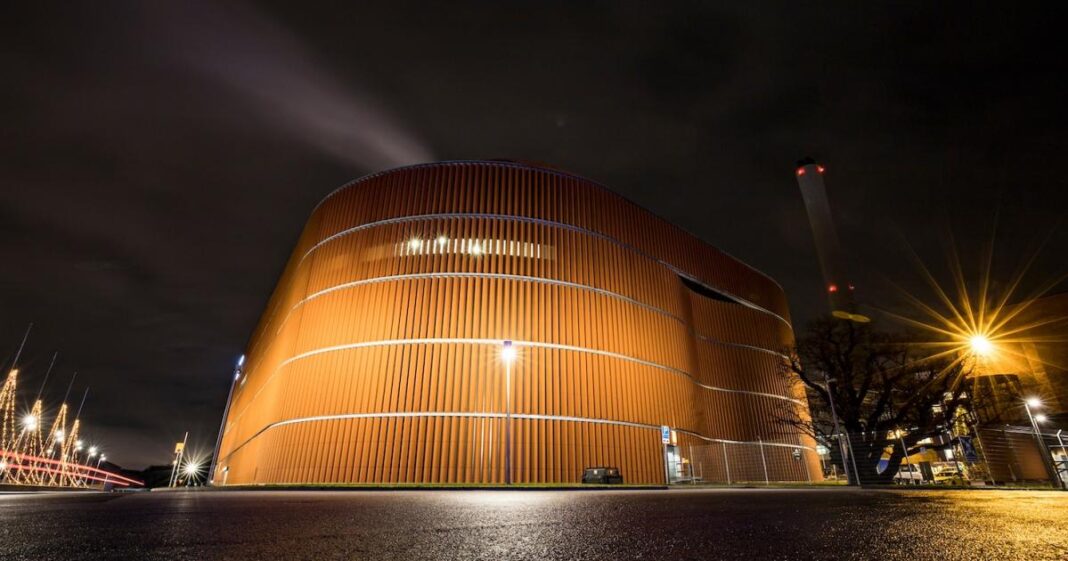Microsoft is one of the largest corporate buyers of credits for carbon removal and it shows no sign of slowing down: In early May, the software developer disclosed its biggest carbon removal contract yet, a 10-year deal covering 3.3 million metric tons of emissions starting in 2028 at an installation being built in Stockholm.
The deal follows contracts signed by the company in fiscal year 2023 to eliminate 5 million metric tons. That’s more than five times what Microsoft committed to in fiscal 2022 and roughly 16 times the size of the biggest project supported by Frontier, the high-profile, $1 billion initiative founded by Alphabet, Meta, Shopify and Stripe.
The new project is being built by Stockholm Exergi, an energy utility that serves 800,000 business and residential customers in Stockholm with central heating and hot water, fueled largely by burning municipal and organic waste, such as residue from forest management. The energy from that reduces natural gas imports for the Swedish capital. Now, Stockholm Exergi is adding carbon capture and storage to the process, with the potential to remove up to 800,000 metric tons of carbon dioxide annually.
The approach Stockholm Exergi uses is known as bioenergy with carbon capture and storage (BECCS). In this process, waste is burned to produce heat — which is then sold to consumers — but the carbon dioxide emitted is chemically captured in a solvent, liquified, and then injected deep underground where it remains sequestered for 1,000 years or more. As of 2022, roughly 2 million metric tons per year were captured like this. Other BECCS projects underway could remove 50 million metric tons by 2030, according to some forecasts.
“Leveraging existing biomass power plants is a crucial first step to building worldwide carbon removal capacity,” said Brian Marrs, senior director of energy and carbon removal at Microsoft, in a statement. “In this case, we are pleased with the efficiency of recovering heat from carbon capture and adding it into district heating networks. Finally, it is crucial to sustainably source the biomass for BECCS projects, and we were impressed with Stockholm Exergi’s commitment in this regard.”
Combined public-private financing
Aside from the funding provided by Microsoft, Stockholm Exergi is seeking public funds from the European Union’s Innovation Fund and revenue from additional corporate contracts, said the company’s CEO, Anders Egelrud. “We need state support to make this happen,” he said.
The environmental permit for the project was approved in March. Construction is slated to begin in 2025, provided the company gets financial aid from the Swedish government. That decision is expected by the fourth quarter of 2024, according to the press release.
When the installation begins capturing emissions, Microsoft will be able to count the removals toward its corporate goals. The Swedish government will also report them as part of Sweden’s national climate strategy. The proper attribution of credit is important for more private-public financing of scalable carbon removal projects, Microsoft said in a carbon accounting guide published in April.
“When a company buys credits, they obtain legal title to those removals, whereas nations report them on a geographic basis,” Microsoft said. “Our recommendation is to transparently report the sources and national domiciles of each credit (which may contribute to a global claim), so that there is a clear linkage between the corporate inventory and the national accountancy for any credit.”
Current greenhouse gas accounting rules — which don’t marry the two — are “increasingly a stumbling block” to incentivizing deeper corporate investments in carbon removal projects, Microsoft said.
Low technical barriers, coupled with potential to scale
This is not Microsoft’s first project using BECCS. It signed an 11-year agreement in May 2023 for 2.67 million metric tons of carbon removal with Danish energy company Ørsted. The two heat and power plants included in that contract will capture 430,000 metric tons of biogenic CO2 (carbon from non-industrial sources) a year, starting in 2026.
Microsoft is using deals such as this to reduce emissions it cannot otherwise eliminate. The demand for artificial intelligence services is driving up Microsoft’s energy and water loads, and the company is investing in carbon removal to counter emissions from that. In fiscal 2023, for example, it offset about 605,000 metric tons of CO2. Current accounting practices allow Microsoft to claim it is carbon neutral because of those offsets.
BECCS is popular in Europe
Interest in BECCS is particularly high in Europe, which has more mature systems for managing waste biomass than in the U.S., according to Julio Friedmann, chief scientist at Carbon Direct, a corporate carbon management firm.
The key is using waste biomass, rather than damaging old-growth forests. Putting waste into landfill generates methane, which is many times worse as a greenhouse gas than CO2 on a short-term basis. Burning waste and then capturing and sequestering the CO2 produces both heat and a solution to the landfill problem.
“The countries with the most aggressive climate policies are the ones pursuing this,” he said. “They can’t make their grid much cleaner without doing something like this.”
The potential in Sweden is for capture of up to 30 million metric tons annually, contributing more than $2.2 billion to the economy and 28,000 jobs, according to European Commission research.
